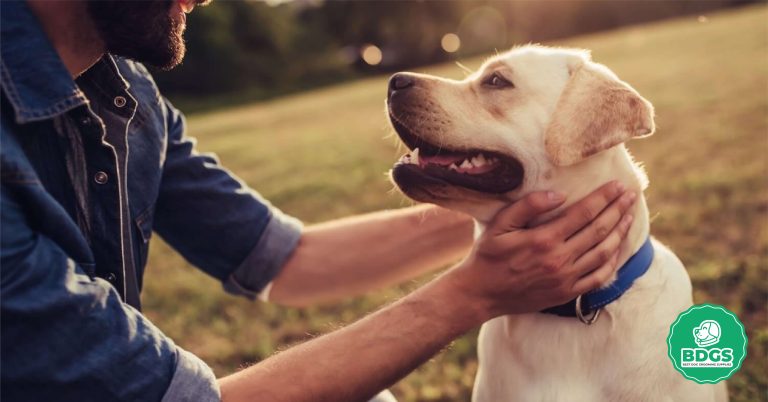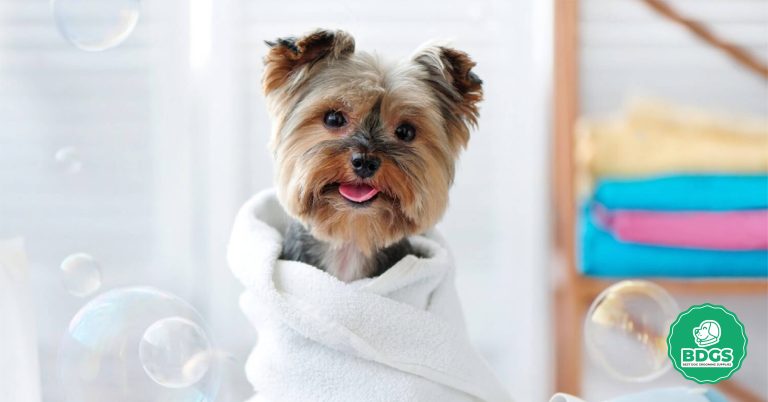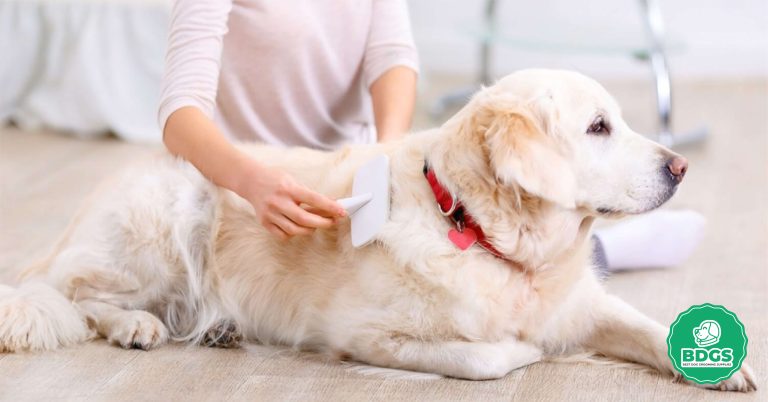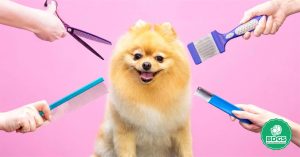Bathing dog is important to keep them clean and healthy. By bathing your pet often, you can keep it clean, eliminate bad smells, and lower the risk of skin irritations and illnesses. But bathing a dog can be difficult if you’re not ready or haven’t done it before.
Taking a few simple steps and being careful can make bath time fun and easy for you and your dog. First, you must ensure you have everything you need for a bath, like a shampoo safe for dogs, blankets, and a non-slip mat for the washing area.
Also, brushing your dog’s fur before bathing will help remove any knots or mats. When it’s time to bathe your dog, ensure the water is cool. Extreme temperatures can hurt your dog’s skin.
Use gentle and encouraging words to keep your dog calm and at ease during the process. Lastly, rinse off the shampoo and dry your dog with blankets or a low-setting microwave. With a little time and care, you can learn how to bathe your dog and keep it clean and healthy.
Introduction
What are the Importance and benefits of regular bathing dog?
Dogs must be regularly bathed because it helps them in many important ways and is good for their health and well-being. Here are the main reasons why dogs need to be bathed often:
- Hygiene: Just like people, dogs need regular baths to stay clean. Bathing helps eliminate the dirt, waste, and bad smells that can build up on their fur and skin. It keeps them clean and free of health issues that dirt can bring.
- Cleanliness and Odor Control: Regular baths keep your dog clean and fresh by removing dirt, waste, and smells that can build up on their hair. It is especially important for dogs who spend much time outside or do other things that make them dirty.
- Skin Health: Bathing dogs often help keep their skin healthy. It removes dead skin cells, too much oil, and allergens that can irritate, itch, or infect the skin. By keeping the skin clean, bathing helps prevent several skin problems and keeps the skin healthy.
- Coat Health: A dog’s coat is healthy if washed correctly. It helps remove free hair, tangles, and mats, preventing them from worsening and causing skin problems. Regular bathing also helps keep the coat in good shape by getting blood to the hair cells.
- Parasite Control: Controlling external pests like fleas and ticks is almost impossible without bathing. It helps eliminate these bugs from the dog’s fur, making it less likely that they will cause an infection or spread diseases.
- Early Detection of Problems: Bathing allows owners to examine their dog’s body closely. During the process, any odd lumps, bumps, skin problems, or bruises can be found early on. It allows vets to help immediately and prevent potentially major health problems.
By making bathing a regular part of a dog’s cleaning routine, owners can keep their pets clean, avoid skin problems, encourage healthy hair, get rid of bugs, and deal with new health problems immediately.
Preparing for the Bathing Dog
How do I gather the necessary supplies (shampoo, towels, brushes, etc.)?
Getting the things you need to bathe your dog is important to ensure the process goes smoothly and quickly. Here’s how to get the things you need:
- Wash: Choose a wash made just for soft dogs, has a pH balance, and is good for the type of skin your dog has. Look for shampoos that help with dry skin, bugs, or allergies.
- Towels: Have a few towels ready to dry your dog off after bathing him. Choose towels that can soak up water and are big enough to wrap around your dog.
- Brush or comb: Before you bathe your dog, use a brush or comb that is right for its coat type to remove tangles or mats. It will make washing easier and help keep the dog from getting even more matted as it dries.
- Non-slip mat: Put a non-slip mat or rubber mat where your dog is swimming to keep it from falling and avoid problems.
How do I choose the right bathing location?
Choosing the right place to bathe your dog is important for his happiness and safety. Think about the following:
- Tub or sink: Use a tub or sink that is right for the size of your dog. Ensure it’s clean, easy to get to, and has no slippery surface.
- Outdoor bathing: If the weather is nice and your dog likes it, you can bathe your dog outside. Use a spot with a hose, bucket, or place for bathing dogs.
How do I ensure a safe and calm environment?
Putting your dog at ease during bath time is easy if you make the area safe and quiet. Here’s how to make sure everyone is safe and calm:
- Prepare in advance: Before you bathe, get everything you need and set it up in the bathing area. This way, there are no last-minute distractions or looking for things while bathing.
- Warmth and comfort: Make sure the place you bathe is warm and has no drafts. Keep the water temperature at about body temperature to keep your dog from being uncomfortable.
- Positive reinforcement: Use treats, praise, and kind words to help your child think of bath time positively. Reward your dog for remaining calm during the whole process.
- Stay calm and confident: Dogs can feel the energy of their owners, so staying calm and sure of yourself will help comfort your dog and keep them calm.
Step-by-Step Guide to Bathing Dog
Step 1: Brush your dog’s fur before bathing them.
Before bathing your dog, brush its fur to remove any knots, mats, or loose hair. It keeps the coat from getting even more tangled during the bath and ensures the shampoo gets to every part of it.
Step 2: Get the swimming area ready and check the water temperature
Set up the bathroom with shampoo, towels, and a non-slip mat. Ensure the water in the tub or sink is neither too hot nor too cold.
Step 3: Wet your dog’s fur completely.
Wet your dog’s hair from head to tail with a mobile spray or a jug. Ensure the water gets to the skin by starting at the neck and working your way down.
Step 4: Using shampoo made for dogs and lathering it up
Put a small amount of shampoo made for dogs on your dog’s fur. Work up a foam by gently massaging it into the fur. Pay attention to places like the stomach and paws that tend to get dirty and smelly.
Step 5: Completely rinse off the shampoo
Rinse your dog’s fur well, ensuring all the shampoo is gone. Shampoo remnants may cause skin irritations. Pay extra attention to places like the belly and arms that are sensitive.
Step 6: Use towels or a blow dryer to dry your dog.
Dry your dog with a towel, and soak up as much water as possible. If your dog is okay with it, you can use a blow dryer on low and keep it away to avoid getting too hot or uncomfortable.
Step 7: After bathing your dog, brush its fur.
Once your dog’s fur is mostly dry, brush it to remove any tangles or mats that might still be there. It keeps the coat clean and healthy.
Handling Special Considerations
How do I bathe puppies or senior dogs?
When bathing babies or older dogs, there are some extra things to consider. Here’s how to bath them:
Puppies:
- Start with shorter, more gentle baths to help them get used to the idea.
- Use a dog shampoo that is gentle and made for sensitive skin.
- Keep the water cool and make sure the setting is calm and safe.
- Use treats and positive feedback to help your child look forward to bath time.
- Handle their sensitive bodies extra care, and don’t get water in their ears or eyes.
Senior Dogs:
- Choose a swimming area that won’t make you fall or hurt yourself.
- Ensure the water is warm and soothing for their joints and muscles, which are getting older.
- Use a soft shampoo that fits their needs, such as one that moisturizes or is made for people with sensitive skin.
- Take a break if your older dog gets tired or stressed during the bath.
- Dry them well to avoid getting a chill, and think about using a blow dryer on a low setting.
How do you address skin conditions or sensitivities?
Taking care of skin problems or allergies during a bath takes extra care:
- Consult a Veterinarian: If your dog has a known skin problem or allergy, ask a vet for advice on the right products and methods to use when bathing your dog.
- Use Specialized Shampoos: Choose shampoos that are made for your dog’s skin condition, like medicated shampoos for eczema or hypoallergenic shampoos for sensitive skin.
- Patch Test: Before using a new shampoo or product on your dog, put a small amount on a small part of his skin to see if he has any bad reactions.
Follow Your Vet’s Advice: Do what your vet tells you to do when it comes to how often, how long, and what other treatments to use for your dog’s skin problem.
How do you deal with fearful or anxious dogs?
When it’s time to bathe a dog, it takes patience and understanding to deal with a dog that is scared or nervous:
- Gradual Desensitization: Gradually get your dog used to getting a bath by letting them explore the washing area without water and giving them treats and praise for being calm.
- Positive Reinforcement: Throughout the process, give your dog treats, praise, and encouragement as ways to use positive reinforcement. It helps people feel good about taking a bath.
- Calming Techniques: Use calming techniques like soothing music, scents, or a Thundershirt to help ease nervousness during bath time.
- Professional Help: If your dog has a lot of fear or anxiety, you might want help from a professional dog trainer or behaviorist who has worked with fearful dogs before.
Maintaining a Bathing Routine
How do you establish a bathing schedule for your dog?
Establishing a Bathing Schedule:
- Think about what your dog needs. Your dog’s breed, coat type, level of exercise, and lifestyle can all affect how often they need a bath.
- Consult your vet. Ask your vet how often they think your dog should be bathed, taking into account any skin problems or allergies your dog may have.
- Check your dog’s health. Look at your dog’s hair and skin to see if it needs to be washed more or less often. Overbathing can make the skin lose its natural oils, so finding the right mix is important.
How do I choose appropriate grooming products?
Choosing Appropriate Grooming Products:
- Think about your dog’s coat and skin type: Choose shampoos, conditioners, and brushes that are made for your dog’s coat type (such as short, long, or wavy) and any special needs or allergies they may have.
- Read the labels and look at the ingredients: Look for cleaning products that say they are safe for dogs and don’t contain any harsh chemicals or allergens. Options that are natural or don’t cause allergies can be good for dogs with sensitive skin.
- Consult a vet if you need to: If your dog has certain skin problems, allergies, or sensitivities, talk to your vet about the best items to use for cleaning.
How do I seek professional grooming services, if necessary?
Seeking Professional Grooming Services, if Necessary:
- Do research on professional groomers: Look for grooming shops or pros with good reputations and good reviews. Ask for recommendations from friends, family, or your doctor.
- Visit or ask: If you can, go to the grooming center or call them to find out about their services, prices, experience with certain types, and whether they can make special arrangements for dogs with special needs.
- Check certificates and licenses: Ensure the groomer has a certification or license that shows they know what they are doing and follow industry standards.
- Communicate your dog’s needs: Tell the groomer exactly what your dog needs for cleaning, including any special directions, allergies, or preferences. It helps ensure your dog has a customized and easy time getting groomed.
Bathing Tips and Best Practices
How do I use positive reinforcement and rewards during the bath?
- Treats and praise: Throughout the bath, reward your dog with small treats, verbal praise, and light touching. Offer treats for being calm, working with you, and putting up with certain steps of the washing process.
- Take breaks: If your dog gets nervous or stressed during the bath, give them short breaks. Give them treats, praise, and encouragement during this time to help them calm down.
- Toys or distractions: Give your dog a special toy for bath time or a puzzle toy that gives out food to keep him busy and sidetracked while he’s getting washed. It can help them focus on something else and consider bath time a good time.
How do you protect your dog’s ears and eyes during the bath?
Protecting your dog’s ears and eyes during the bath is important to keep them from hurting or feeling uncomfortable. Here are some ways you can make sure they are safe:
- Ears: Carefully put cotton balls or earplugs in your dog’s ears to keep water out. Ensure they fit well; don’t force them too far into your ears. Right after the bath, take them off.
- Eyes: Don’t get water, shampoo, or any other cleaning product in your dog’s eyes. Instead of spraying water directly on the face, use a towel or a light spray to wet the area around the face.
How do you prevent slipping accidents and ensure safety?
For your dog’s health, it’s important to keep him from falling and safe during the bath. Keep these rules in mind:
To keep your dog from falling, put a non-slip mat or towel in the area where they are washing. It ensures they can stand safely and reduces the chance of getting hurt.
Secure your dog’s standing by holding them tightly or using a grooming collar to support them and keep them from losing their balance. Ensure their paws have enough grip and aren’t moving on a surface that’s too smooth.
Use a helper if you need to. If your dog is big or needs more help, have a family member or friend help you bathe it. It helps ensure your dog stays steady and safe during the process.
Conclusion
Bathing your dog is important to cleaning them and ensuring they are generally healthy. Following some important steps and things to consider can make bath time fun and beneficial for you and your dog.
Start by getting everything you need, like shampoo safe for dogs, blankets, and a mat that won’t slip. Before bathing your dog, brush its fur to remove any knots or mats. Choose a good place to bathe, ensuring the water and atmosphere are cool.
Use treats, praise, and positive feedback to help your child think of bath time well. Protect your dog’s ears and eyes from water and cleaning products, and avoid falling accidents.
Remember that every dog is different, and it may take some time to get used to being bathed. Be understanding and patient, and change the process to fit your dog’s needs. With regularity and positive feedback, bath time can be a time to bond with your dog and take care of its health and cleanliness.
Please take advantage of the chance to get to know your pet friend by giving them clean, comfy hair, healthy skin, and a good cleaning experience. So, let’s make bath time fun and give ourselves a happy, well-groomed friend to love.
Frequently Asked Questions
How often you should bathe your dog depends on several things, such as its breed, hair type, exercise level, and whether or not it has any skin problems. Most dogs can be washed infrequently. If they bathe too much, their natural oils can be washed away. It can lead to dry skin and other problems. Most dogs don’t need to be bathed more than once every 6 to 12 weeks. However, a vet might advise that some dogs, such as those prone to skin issues, would benefit from more frequent baths.
Here’s how to give your dog a bath at home, step by step:
Gather Your Supplies: Ensure you have everything you need, like shampoo made just for dogs, blankets, a non-slip mat for the tub, and treats to reward your dog.
Brush First: Brush your dog to remove knots and hair before bathing it. I keep the hair from getting tangled up even more in the bath.
Set up the bathing area: Put a non-slip mat in the tub or sink to keep your dog from falling. Fill the tub with enough warm water for your dog to be comfortable.
Wet Your Dog: Use a hand-held sprayer or a cup of water to wet your dog’s hair gently. Try not to spray water right in their face.
Apply shampoo: Use a shampoo made for dogs and rub it into your dog’s fur. Beginning at the neck, work your way down. Be careful around areas like the ears and eyes that are sensitive.
Massage and Rinse: Work the shampoo into your dog’s hair, getting it to the skin. Rinse your hair well, making sure all of the shampoo is gone.
Towel Dry: After washing, pat your dog’s hair dry with a towel. If your dog is okay with it, use a hair dryer to the lowest heat setting.
Reward and praise: Throughout the process, give your dog treats and honor to help them think of baths well.
Keeping your dog clean and healthy is essential, but not all dogs need to be bathed often. Some breeds have coats that clean themselves and make oils that keep their coats healthy. Your dog won’t need to be bathed as often if you brush him often, feed him well, and clean him up when he gets dirty.
Most dogs like bathing in cool water. If the water is too hot or cold, it can hurt and make them feel bad. Use your wrist or elbow to check the water’s temperature to ensure it’s not too hot. If you give them lukewarm water, your dog will be cozier and less likely to feel pain or stress.











